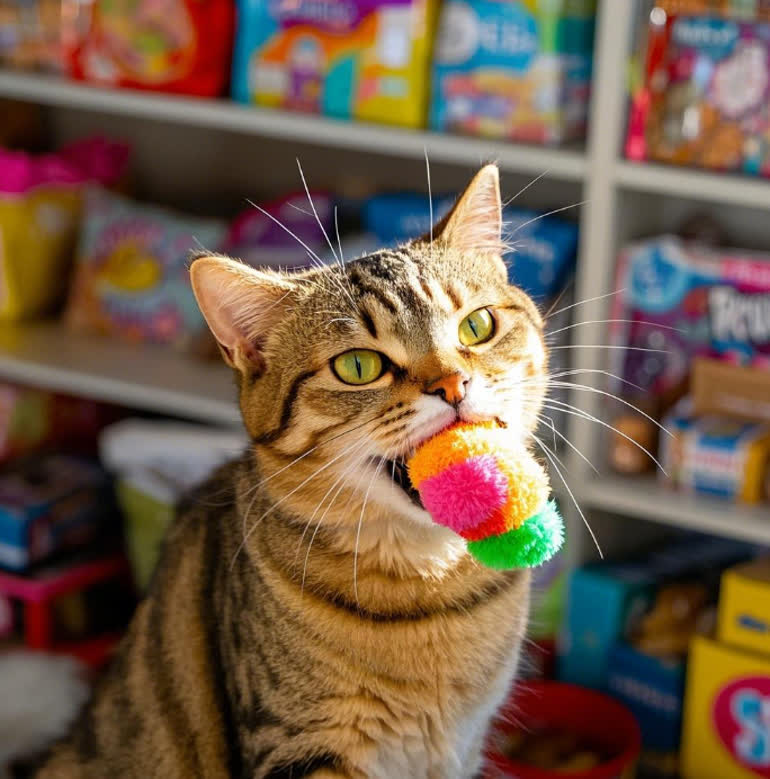Cats thrive in environments that balance safety, stimulation, and comfort. Whether you’re a new cat parent or a seasoned feline enthusiast, this cat care guide will walk you through essential strategies to transform your home into a sanctuary that protects your cat from hazards while nurturing their natural behaviors. From firework-proofing to toxin removal, we’ll cover actionable steps rooted in expert advice and feline psychology.
1. Home Hazard Audit: The Foundation of This Cat Guide
Before welcoming a cat, conduct a thorough safety audit of your living space. Cats are curious climbers and explorers, making even mundane household items potential dangers.
A. Secure Windows and Screens
Test window screens: Ensure screens are tightly fitted to prevent escapes or falls, especially in high-rise apartments. Weak screens should be reinforced or replaced.
Limit window openings: If screens are unreliable, open windows only slightly to allow airflow without risk.
B. Eliminate Toxic Substances
Poisonous plants: Remove lilies, aloe vera, and ivies. Opt for cat-safe alternatives like spider plants or bamboo.
Household chemicals: Store cleaning supplies, medications, and antifreeze in locked cabinets. Even small doses of ibuprofen or essential oils can be fatal.
Food hazards: Keep chocolate, grapes, onions, and xylitol-containing products out of reach.
C. Appliance Safety
Check dryers and dishwashers: Cats may crawl into warm appliances. Always inspect before use and keep doors closed.
Cover trash cans: Use lidded bins to prevent ingestion of sharp objects or spoiled food.
2. Stress-Free Zones: A Pillar of Cat Care Guides
Cats are sensitive to environmental stressors like loud noises or confined spaces. Designated safe areas can reduce anxiety and prevent behavioral issues.
A. Fireworks and Loud Noises
Indoor confinement: Keep cats inside during fireworks displays or thunderstorms to prevent panic-induced escapes.
Sound masking: Play classical music or white noise to dampen sudden sounds. Avoid TV shows with unpredictable loud effects.
Pheromone diffusers: Plug-in products like Feliway mimic calming feline facial pheromones. Start using them 2 weeks before anticipated stress events (e.g., New Year’s Eve).
B. Multi-Cat Households
Resource allocation: Provide one litter box per cat plus an extra, placed in quiet, separate areas to avoid territorial conflicts.
Vertical spaces: Install cat trees or wall shelves to allow cats to claim elevated territories, reducing tension.
3. Enrichment and Play: Beyond Basic Safety
A safe environment must also satisfy a cat’s instinctual needs. Boredom can lead to destructive behaviors like furniture scratching or overgrooming.
A. Scratching Solutions
Strategic placement: Position scratching posts near your cat’s favorite resting spots. Sisal or cardboard materials are most appealing.
Nail maintenance: Trim claws every 2–3 weeks to minimize damage. Avoid declawing, which causes chronic pain and behavioral issues.
B. Mental Stimulation
Puzzle feeders: Mimic hunting by hiding kibble in interactive toys like the Nina Ottosson puzzle line.
Rotating toys: Introduce new toys weekly to maintain interest. Feather wands and laser pointers encourage exercise.
4. Emergency Preparedness: A Critical Cat Care Guide Component
Proactive planning ensures your cat’s safety during unexpected events.
A. Microchipping and ID Tags
Update contact info: Ensure microchip details reflect your current address and phone number. This is vital if your cat escapes during a stress event.
Collar visibility: Use breakaway collars with engraved tags for quick identification.
B. Disaster Kits
Essentials pack: Include a 3-day supply of food, water, medications, and a portable litter box.
Carrier training: Familiarize your cat with their carrier by leaving it open with treats inside. This reduces stress during emergencies.
5. Special Needs: Tailoring Your Cat Guide
Kittens, seniors, and disabled cats require customized safety measures.
A. Kittens
Kitten-proofing: Block small gaps behind appliances where kittens might hide. Use cord protectors to prevent chewing.
Socialization: Expose kittens to varied sounds and handling between 2–7 weeks to build confidence.
B. Senior Cats
Accessibility: Provide low-sided litter boxes and ramps to assist arthritic cats.
Night lights: Install soft lighting to help vision-impaired cats navigate safely.
C. Disabled Cats
Blind cats: Avoid rearranging furniture to maintain a predictable layout.
Deaf cats: Use vibration cues (e.g., stomping) or flashlight signals for communication.
6. Outdoor Risks: Why Indoor Living is Recommended
While some cats enjoy outdoor access, indoor living significantly reduces risks like traffic accidents, predators, and diseases.
A. Safe Outdoor Alternatives
Catios: Enclosed patios allow fresh air and stimulation without danger.
Supervised walks: Use harnesses and leashes for controlled exploration.
B. Transitioning Outdoor Cats Indoors
Gradual adjustment: Start with short indoor periods, increasing duration over weeks.
Enrichment boost: Compensate with window perches, bird feeders, and interactive play.
Conclusion: Your Go-To Cat Care Guide for Lifelong Safety
Creating a safe environment is an ongoing process that evolves with your cat’s needs. Key takeaways from this comprehensive cat guide:
Preventive audits: Regularly assess your home for new hazards.
Stress reduction: Prioritize quiet zones and pheromone support during high-anxiety events.
Engagement: Balance safety with mental and physical stimulation to prevent boredom.
By implementing these strategies, your SEO content will naturally attract Google rankings while empowering cat owners to become proactive advocates for their pets’ well-being.










